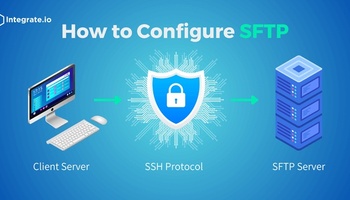- What Are the Existing Challenges When Building Healthcare Data Pipelines?
- Unifying Healthcare Records
- Ensuring Data Credibility
- Eliminating False Positives During Data Transformation
- Ensuring Data Security & Compliance in Healthcare
- Healthcare Cloud Data Warehouse Strategy
- Detecting Healthcare Fraud
- Delivering Healthcare Insights Faster
- Secure Your Healthcare Analytics Solutions with Integrate.io
The healthcare industry is beginning to digitally transform with its adoption of continuously advancing technologies. Healthcare organizations are moving toward a more connected and collaborative healthcare ecosystem for improving the way they provide care.
Any data-driven organization knows the importance of high-quality data pipelines in data science. The large amounts of heterogeneous healthcare data, call for healthcare organizations to adopt data-driven approaches to automate medical workflows.
A healthcare data pipeline refers to connectors that are responsible for moving and transforming medical data between systems. A high-quality data pipeline allows healthcare institutions to access fresh and accurate medical data for providing accurate diagnoses and prognoses.
Before talking about the different processes involved, let us discuss the existing challenges in building secure healthcare data pipelines.
What Are the Existing Challenges When Building Healthcare Data Pipelines?
The healthcare industry deals with large amounts of data from disparate data sources. When building data pipelines, healthcare data can pose many challenges. For better understanding, the challenges of building healthcare data pipelines can be categorized into general and specific challenges. General challenges are those that are typically faced by any industry that builds their own data pipelines, like:
-
Data integrity and security
-
Avoiding duplicate data
-
Dealing with cascading pipeline failures
-
Pipeline scheduling challenges
-
Scalability with increasing data
Data pipe-lining challenges specific to the healthcare industry are based on particular characteristics of healthcare data. Data in healthcare is private, highly sensitive, and continuously changing in real-time. Errors in such critical data can pose threats to a patient’s health and safety. Consequently, medical pipelines can be difficult to build with challenges like:
-
Handling massive amounts of medical and administrative datasets
-
Ensuring patient data privacy
-
Ensuring medical data credibility and availability, delays can be crucial for a patient
-
Ensuring robust pipelines that respond timely to errors with minimal downtime
These are just a few of the many challenges faced by data engineers when building medical data pipelines. However, creating data accessibility with high-quality data pipelines is a necessity. Efficient medical data pipelines can open gateways for the healthcare industry to leverage the applications of technologies like machine learning algorithms and automation.
Unifying Healthcare Records
The digitization of the vast healthcare industry has contributed to creating healthcare big data, collected and unified for making important medical decisions.
With the advancements in technology, numerous isolated medical applications have been made to leverage healthcare big data. The need of the hour for healthcare is consolidating data from these applications to create a holistic view of medical data. As a result of this consolidation, important insights can be driven to optimize treatment options at reduced costs.
Healthcare data aggregation entails data collection from a large number of sources and data transformation. Types of healthcare records include:
-
Patient medical records either from patient's IoT devices or from hospital appliances.
-
Administrative data
-
Doctor records
-
Patient/doctor survey results
There are so many layers to medical records that are complex and time-consuming to analyze. Before consolidating all these records, some transformations are required to structure the raw data in uniform formats. The unification of healthcare records is an important step toward making data-driven decisions based on actionable insights. As a result of these insights, hospitals can effectively improve their disease prevention and prediction processes.
Ensuring Data Credibility
An important consideration when building data pipelines is the maintenance of data credibility and integrity throughout the data lifecycle. It is critical for doctors to have authentic data at hand to make the right medical decisions. Ensuring healthcare data credibility is a critical factor in healthcare as the slightest modification in patient data can have devastating health outcomes for a patient.
Patient information is the most important type of medical data. It involves a patient's medical history, test results, personal information, and more. Accurate patient information can help derive reliable results, whereas inaccurate or tampered data can result in the wrong treatment of patients.
Ensuring patient data credibility and accuracy during data flow can result in:
-
Improved patient care
-
Accurate diagnostic and prognostic insights
-
Personalized patient treatment
-
Efficient communication and understanding between healthcare providers and patients
-
Faster outcomes
Eliminating False Positives During Data Transformation
Alerts are an essential security component of the healthcare data pipe-lining process. Alerts allow security officers to detect anomalies during the data transformation process. However, there are some alerts that can be costly to pursue. These alerts are called false positives and they are generated as a result of a notification that turns out to be a bad lead.
Owing to the sensitivity of data in healthcare, every alert is treated critically. Responding to alerts is a time and resource-consuming process, therefore it is crucial for healthcare security models to eliminate false positives.
While eliminating false positives altogether might be challenging, there are AI and machine learning resources that can drastically reduce false positives. These models automatically filter out false positives and send legitimate alerts back for further investigation. As a result, healthcare security professionals can save a lot of time that can be spent on pursuing true violations.
Ensuring Data Security & Compliance in Healthcare
Healthcare systems today are continuously evolving by embracing technologies like cloud and web services for healthcare data management and effective patient care. While the advancements of these systems are increasing convenience, healthcare data is becoming increasingly vulnerable to attacks and breaches.
In addition to data security, compliance also has an important role to play in building secure healthcare data pipelines. There are a number of healthcare standards that aim to ensure patient privacy and data safety. The most widely accepted of these include:
-
Health Insurance Portability and Accountability Act (HIPAA): A healthcare standard for regulating the usage of private patient data.
-
General Data Protection Regulation (GDPR): A European standard for data protection laws.
-
Fast Healthcare Interoperability Resources (FHIR): A standard for regulating the electronic exchange of sensitive healthcare information.
Compliance with these standards aids the healthcare industry in reinforcing and upholding a standard of data security. Data compliance ensures medical data safety in storage as well as during data exchange.
Healthcare Cloud Data Warehouse Strategy
The growing volume and usage of healthcare data are becoming increasingly difficult to analyze and manage. Data warehousing has become a necessity for healthcare institutions to effectively manage their data. A data warehouse is a central healthcare database for data storage, that ingests all the transformed healthcare data, ready for analysis.
As the digital world moves to the cloud for optimization, there is no reason why cloud computing and its microservices cannot be leveraged to manage healthcare data. A cloud data warehousing strategy is particularly useful for the healthcare industry in the following ways:
-
Implementing data rules specific to healthcare and ensuring data compliance
-
Healthcare data integration
-
Reduced system latency
-
Implementing complex machine learning data models on clinical data for diagnosis and treatment.
-
Automating and optimizing healthcare services
-
Improving workflow in a cost-effective manner
-
Workload distribution
-
Delivering fast and actionable healthcare insights for quality patient care
These are just a few of the many advantages of utilizing a cloud data warehouse strategy for healthcare analytics.
Detecting Healthcare Fraud
Although healthcare frauds have been around for a long time, their discrete nature rendered them difficult to detect in most cases. However, the recent digitization of the healthcare industry has opened new gateways for detecting healthcare frauds.
An important advantage of the digital world is that every action leaves a digital footprint. This footprint serves as a clue for modern fraud detection technologies to not only detect but also predict, frauds.
Most common fraudulent activities in the healthcare industry include:
-
Healthcare providers multiple-billing for their services.
-
Healthcare providers conducting unnecessary medical tests or procedures
-
Unnecessary use of medical equipment
-
Patients forging prescriptions
-
Healthcare insurance fraud by patients
-
Identity theft to use another patient's healthcare cards.
These are just a few of the many ways in which healthcare providers and patients commit healthcare fraud. Fortunately, technologies have advanced enough to fight these frauds.
Healthcare fraud detection leverages the benefits of AI for auditing automation to quickly and accurately detect anomalies. Furthermore, the patterns of historic healthcare frauds are used by predictive machine learning models to predict fraudulent behaviors.
As AI and machine learning technologies advance, healthcare fraud detection is only going to improve in the future.
Delivering Healthcare Insights Faster
Owing to its digital transformation, the healthcare industry stores and moves bulks of healthcare data. This data withholds tons of important insights that can dramatically optimize patient care. For manifesting better medical data outcomes, it is important to provide all stakeholders of a clinical setup timely access to relevant healthcare information.
Machine learning is very useful in this aspect as its algorithms offer auto-scaling to derive insights from the continuously increasing healthcare data. Furthermore, data visualization platforms are also becoming popular for providing interactive dashboards to analyze medical data. Following are the examples of tools that leverage these solutions to offer large-scale medical data analysis:
-
Amazon's AWS Healthlake: A popular healthcare analytics solution that uses machine learning and analytics tools to help healthcare organizations perform optimized medical data analysis.
-
Apache Spark: An open-source data analytics framework for large-scale data processing, suitable for healthcare use cases.
In addition to data lakes and warehousing solutions for data analytics, data scientists also use infrastructure tooling solutions like Kubernetes. These tools can dramatically reduce the time for medical insights delivery from months to weeks.
Secure Your Healthcare Analytics Solutions with Integrate.io
The healthcare sector is directly linked to the world population. As the population grows, so do the healthcare needs of the people, eventually adding to the increasing healthcare records. A connected healthcare ecosystem has become a necessity for organizations to keep up with the growing medical information.
Building pipelines to create a collaborative healthcare environment is not enough. Effective measures need to be taken to ensure the protection of healthcare data pipelines.
Want to know how you can protect your medical data while still using it for valuable insights? Check out Integrate.io, an ETL solution for masking your healthcare data before transferring it to your data warehouse. Try it out now.











